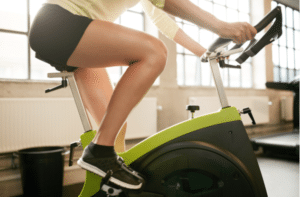
Do you have venous insufficiency?
It’s easy to spot the signs of spider veins. The webs of purple, blue, and red veins are immediately recognizable. Varicose veins can be, also, but usually not until they become prominently visible. What you need to know about varicose veins is that they may present telltale signs well before you see them show up beneath the skin. These include:
- Aching and cramping
- Leg cramps or twitching when you’re resting or sleeping
- A feeling of heaviness or fatigue in the legs
- Itching or tingling near the varicose vein
- Skin discoloration similar to a bruise near the varicose vein
- Leg ulcers
- Pain that worsens with standing and improves with elevation
Venous insufficiency does not resolve on its own. In some cases, it is necessary to obtain clinical treatment to eliminate painful, unattractive veins. Even if you do get vein treatment, though, your doctor will advise you to make some lifestyle changes to reduce your risk of developing new varicose veins. These include the following:
Elevate the Legs
To help blood exit the legs more efficiently, it is beneficial to elevate the legs at least once a day. If you struggle with restless legs syndrome at night, it may be ideal to elevate your legs shortly before going to sleep. The goal is to elevate the feet above the level of the heart. This can be done simply by lying on your back and raising your legs. However, so that you can maintain the position more comfortably, you should lie with your legs supported against a wall or a piece of furniture. For example, a comfortable way to elevate the legs is to lie on the floor and place the lower legs resting on the seat of a couch or chair. The knees will be bent to 90-degrees and the entire lower leg will be supported.
Manage Weight
Weight is a significant factor in the risk of worsening and new varicose veins. This is because the structures of the legs support the weight of the upper body. These structures include the veins. With excess weight comes undue pressure on the veins. If you have varicose veins and you are overweight, your doctor may advise you to work with a dietician or nutritionist. More simply, for minor weight loss and weight management, many people use a calorie-counting app on their phone or subscribe to a weight-loss program that helps them better understand what they are eating and what trades they may make to still feel satiated but with fewer calories.
Avoid Salt
A diet modification that must be mentioned outside of the broader scope of weight management is to limit salt intake. People often get confused about their salt intake because they believe that if they are not salting their food, they aren’t consuming more salt than is necessary. What must be understood is that, if you eat processed foods, chances are you are consuming a fair amount of sodium. Sodium is added to crackers, cookies, chips, even soda. When we consume too much sodium, we experience water retention, and water retention has a direct effect on the veins by increasing the volume of fluid that travels through the circulatory system.
Increase Physical Activity
When we talk about exercise as it relates to venous insufficiency, we’re not talking about the same types of exercise you see people doing in the gym. You don’t need to lift weights or run on a treadmill to support healthy vein function. What you need to do is move. Sure, there are specific exercises that can help manage vein health, like calf raises and leg lifts, but movement on a regular basis is good regardless of how focused it is. If you walk at least 30 minutes a day for five or more days a week, you are supporting vein health and managing your risk for future varicose veins. Yoga can also be very good for the management of venous insufficiency because the activity often uses the calf muscles for stability and can also involve various poses in which the legs are elevated.
Venous insufficiency is a common health concern that can be handled with care. To explore how we can help you treat varicose veins and other vein problems, contact Minimally Invasive Vascular Center in Laurel, MD. Call (855) 803-MIVC (6482).


Monday – Thursday: 9am – 5pm
Friday: 9am – 1pm
Saturday – Sunday: Closed